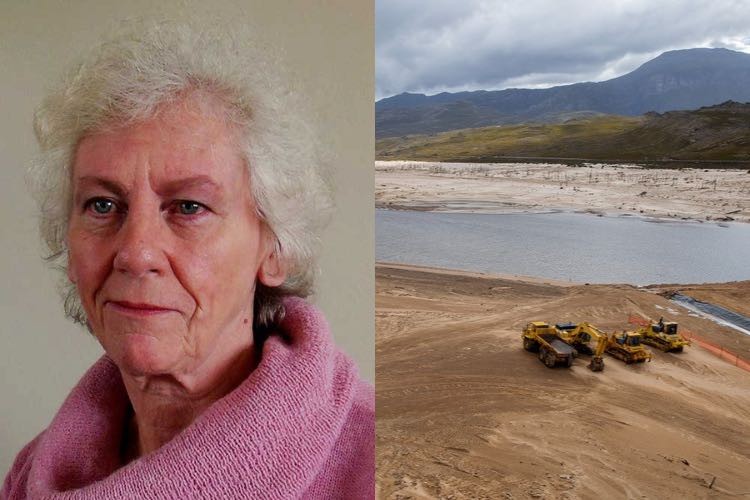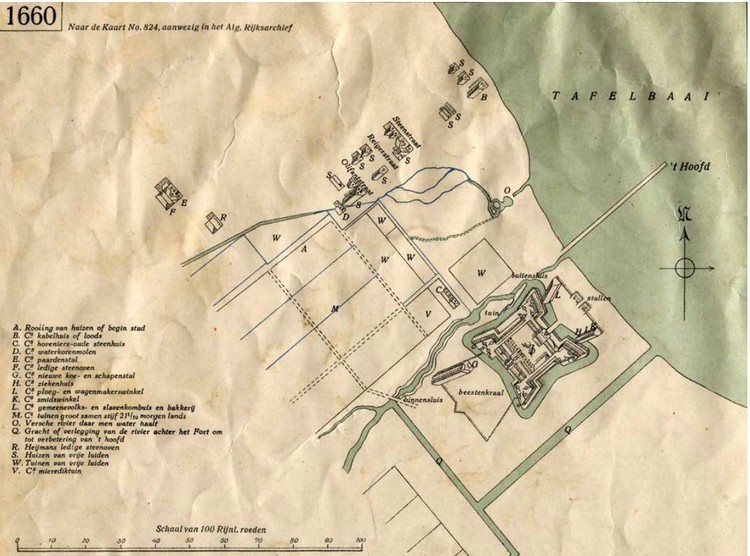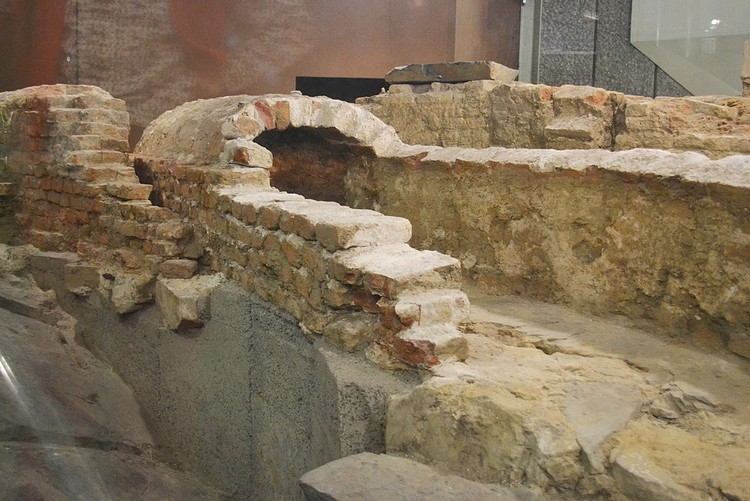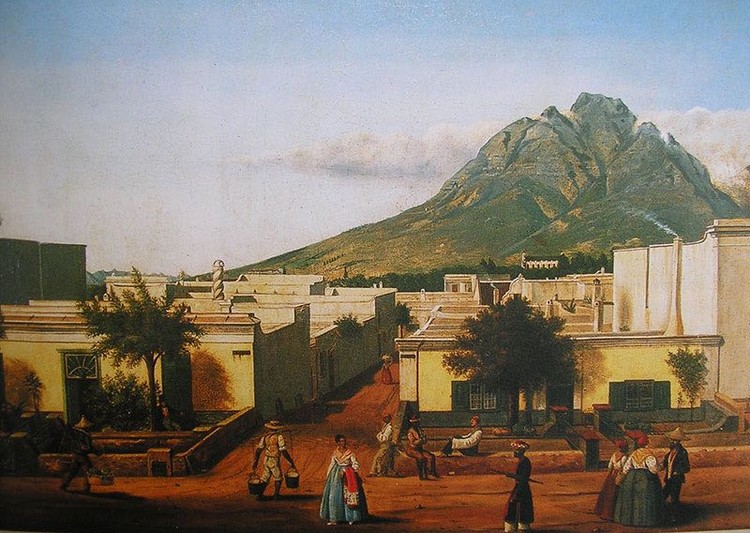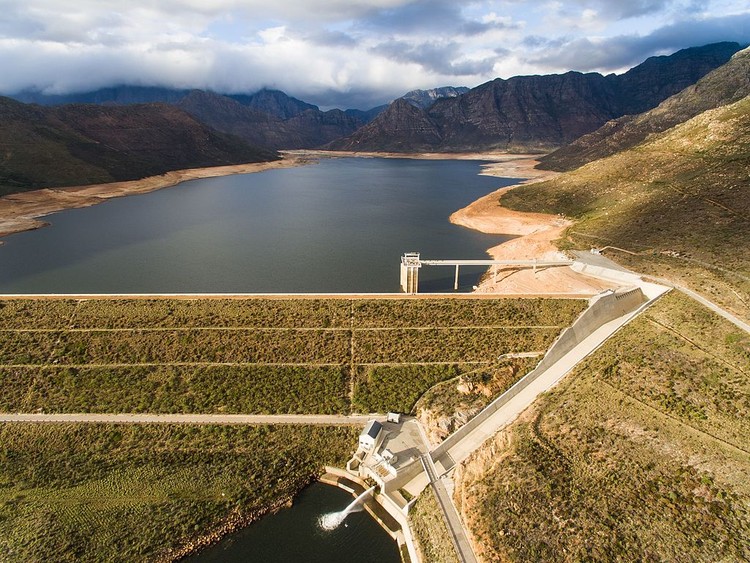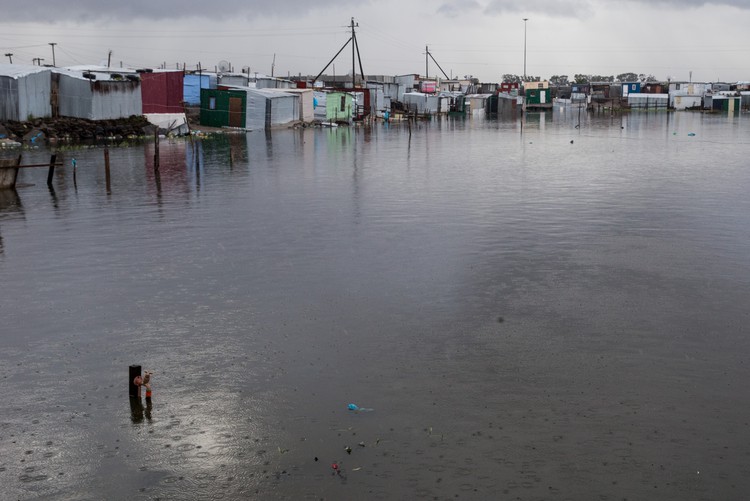Cape Town’s long history of struggling for enough water
Science for the People seminar tells the story of the city’s water supply since 1650
Professor Jenny Day is the director of the Freshwater Research Institute. Portrait photo supplied; dam photo: Ashraf Hendricks
Cape Town’s battle for water supply has a long history, Professor Jenny Day explained in a seminar at GroundUp’s Science for the People event at Bertha House on Friday 8 September.
Day’s talk, titled “Cape Town as a Water-stressed City: 1650s-2020s”, described how since the first colonial settlement in Cape Town, there has been a continuous challenge to secure a sustainable water supply.
For a long time, the water supply in Cape Town depended mostly on Table Mountain’s rivers, including the Platteklip, Disa, and Hout Bay rivers. Over centuries, as the population of Cape Town grew, these rivers were exploited to provide water to the city.
A 1660 map of Cape Town shows the early use of canals (sourced from the archives of the Cape Orphan Chamber).
1652-1806: the Dutch legacy
The Dutch East India Company established an outpost in Cape Town in 1652 to provide fresh supplies for the company’s ships en route to the East. Early water sources included mountain streams and springs.
The governor of the Cape, Zaccharias Wagenaer, built a reservoir on the Farshe River in 1663. The remains of this reservoir can still be seen in the Golden Acre Mall today. Pipes were made out of hollowed-out tree stumps.
Wagenaer’s Reservoir was built in 1663. The remains can still be seen in the Golden Acre Mall today. Photo: A3alb via Wikimedia Commons
In 1764, canals were dug in the city to be used for water supply but also as drains and garbage tips. The canals included Buitengracht, Kaisersgracht and Heerengracht. These canals were later filled in to become roads, which retained the canal names as street names.
The canals were smelly, the water was unpotable, and they were dangerous; people would often fall in at night. Smaller canals were also used to take water to people’s homes. At a later stage, the canals were sluiced out once a week.
A painting of Long Street in 1800s by WHFL Langschmidt shows “lei grachte” - small canals that took water to homes. Source: Iziko Museum, painting by WHFL Langschmidt
1800s: expanding town under British control
In 1806 the British took control of the Cape Colony and filled in the canals, replacing them with stormwater drains. A water shortage in 1819 led the British to build a water house. Pipes were imported and a “pipe tax” was imposed on households.
In the 1820s, the British turned to the Platteklip Stream on Table Mountain for the city’s main water source. Hand pumps were installed in the city. The city’s ecological footprint was still small, home to about 30,000 people in 1865.
The use of springs was expanded throughout the 19th Century, with wells being dug in the City.
But by 1849, water was scarce. The Platteklip stream, now completely exploited, could only provide up to ten litres a minute. Two reservoirs were built in town, which still exist today although they are not used today.
Between 1863 and 1867, Scottish forester John Croumbie Brown was appointed as the Colonial Botanist in the Cape. He studied the water supply and the degradation of land by colonial settlers. Brown wrote that there was not enough water for cleanliness or health.
“People wash their faces once a week, the rest of their persons never,” Brown wrote in 1857.
A letter to the editor of the Cape Argus in 1875 demonstrates the state of Cape Town’s water supply: “In these drains, and fouler pools, the filthy garments of the whole population are washed together. Bad as this is, it is not the worst. It is a well-known fact that of these foetid waters, especially the waters of the Liesbeek, many householders still drink.”
“From an aromatic point of view, it was not a fun place,” said Day.
There was a wash house on the Platteklip Stream on the foot of Table Mountain, where clothes would be washed. But the dirty laundry water would then go downstream to provide water for the rest of the City.
Now that the Platteklip Stream and local springs were exploited, settlers were hard-pressed to find sufficient water for the growing population. Potential dam sites on Table Mountain were identified. In 1891, a tunnel was drilled through the mountain to pipe water from the Disa River to the City, known today as the pipe track. A reservoir spanning Disa Gorge was completed in 1897. The Woodhead tunnel has since collapsed and a new tunnel, the Apostles tunnel, was built fifty years ago and is still used today.
There was a sense among settlers that water flowing into the ocean was being wasted and had to be diverted for human consumption. This is a common misconception, Day said: “Water is never wasted, even if it isn’t used for humans.”
The Berg River Dam was completed in 2009, the last in a series of dams built to enhance Cape Town’s water supply. Photo: Daniel Saaiman via Wikimedia Commons.
20th Century: dam, dam, damn
In the 20th Century, the National Department of Water Affairs looked further afield into the Boland for new water sources for Cape Town.
The Steenbras dam was completed in 1921. More dams were built, including Voëlvlei, Wemmershoek, Theewaterskloof and Palmiet. The Berg River was finished in 2009.
Cape Town will continue to “flip-flop” between flood and drought, Day said. Archive photo: Ashraf Hendricks
21st Century: What now?
All of the useable dam sites have now been used, said Day. Meanwhile, the population continues to increase massively. As of 2023, there are nearly five million people in the City, with about 80,000 people entering the City every year.
An innovative water services plan for Cape Town prioritised water demand management and aquifer recharge. The plan won an award at the Paris Climate Conference at COP21 in 2015.
However, plans to secure additional water sources have been negatively affected by state capture.
A drastic drop in rainfall also led to the water crisis in 2018. The way Cape Town citizens rallied to avoid Day Zero was “incredible” said Day.
But on an institutional level, Day said, emergency provisions have been used to improve water supply at the expense of the environment. Environmental management plans were ignored and environmental impact assessments were bypassed. “It has taken a long time to reverse this thinking,” Day said.
The City of Cape Town has a new plan and is leading several interventions to increase the water supply. This includes innovative projects, such as putting recycled water back into the Cape Flats aquifer.
Day said that by 2050, Cape Town’s rainfall is likely to decrease by 30%. We will continue to “flip-flop” between drought and flood, she said.
© 2023 GroundUp. This article is licensed under a Creative Commons Attribution-NoDerivatives 4.0 International License.
You may republish this article, so long as you credit the authors and GroundUp, and do not change the text. Please include a link back to the original article.
We put an invisible pixel in the article so that we can count traffic to republishers. All analytics tools are solely on our servers. We do not give our logs to any third party. Logs are deleted after two weeks. We do not use any IP address identifying information except to count regional traffic. We are solely interested in counting hits, not tracking users. If you republish, please do not delete the invisible pixel.

